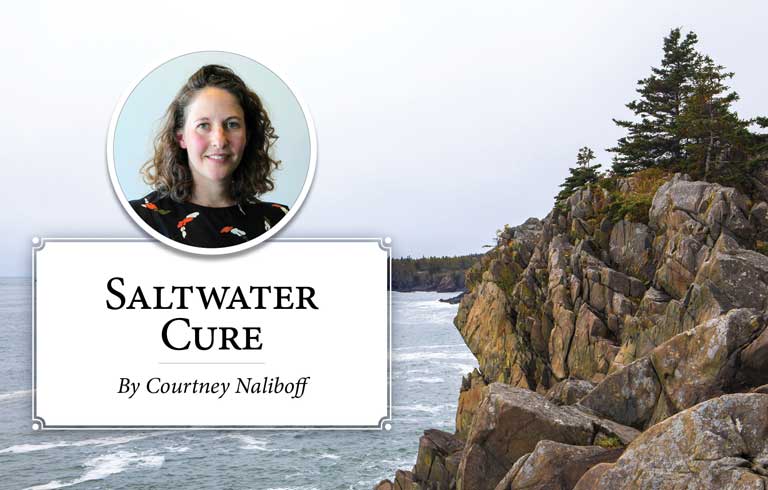Every morning on my way to work I get a little serotonin boost about a half mile from my house. There, in a long, narrow field edged with woods, moseys a small herd of Red Devon cows. One gentle, thick-necked bull, three horned steers, and one pregnant cow named Frieda can be spotted gathered around the hay, or lounging around in clusters, or staring at the road with mild curiosity.
I have a rule, which is that it’s mandatory to yell “HI COWS” when we spot them. Or when I spot them, solo in my car, at 7:25 am.
These particular cows are the fourth herd to bring their unconcerned grace to Middle Road. The first group appeared in late 2019. They belong to Doreen and Sam Cabot, who own Foggy Meadow Farm out on Crabtree Point.
The field on Middle Road is land that’s been farmed by Doreen’s family for decades, though not recently. She brought the cows there when her herd outgrew the available space at Foggy Meadow, but also because her father, Eliot Brown, liked looking at them.
They arrived in North America almost exactly 400 years ago, coincidentally with Sam Cabot’s ancestors…
I do, too. The cows gained significance in early pandemic times, when Bill, Pen, and I were all home together. We took an almost daily family walk—one of the few bright spots I remember from those months—alternating between going to the town park to check on a clutch of salamander eggs in a vernal pool, and visiting the cows.
These were Hereford mixes, which Doreen said are more challenging, and naughtier, than the Red Devons. They’re reluctant to cross the road to the other available piece of field, unless she didn’t want them to cross the road. In that case the black cow could frequently be found in unexpected places, like next to the school bus parked in her father’s yard.
The cows are bred for meat, so we try to not get too attached to each herd. Each new set of cows has a distinct set of personalities and make markedly different silhouettes as they gather at the little pond set against the wooded border. Red Devons are particularly distinctive, with shaggy, chocolatey coats and broad, blunt heads.
They’re an ancient breed, with records dating them back to 23 BCE in Devon, England. They arrived in North America almost exactly 400 years ago, coincidentally with Sam Cabot’s ancestors, who escorted them on the Mayflower.
Their thick hide, gentle demeanor, imperviousness to snow and foul weather, and willingness to eat scrub and spruce boughs rather than relying on perfect hay helped them meander West with the pioneers.
Why is it so pleasurable to look at a free-roaming herd of cows? There’s just something about their curious foraging, their adorable faces as they gaze back at us, and their sweet interactions that’s a balm to the soul in otherwise troubled times.
On a recent walk to visit them I saw Reuben, the bull, licking one of the steers in the herd on the haunch. The other two steers, whom
Doreen refers to collectively as the Three Stooges, lay nearby, unbothered by the half-frozen, muddy ground. Frieda stood farther off, making eye contact with me as I watched them and talked to them unselfconsciously.
“Hello cows! How are you today? Are you good cows? Handsome cows?”
And so on.
Doreen said that before he passed away this summer, her father enjoyed sitting on his front step in a chair, watching the cows. What could be more blissful, more charming, than that? The cows are fully present, in the moment, unaware of and unaffected by any human turmoil. Watching them, one gets a window into serenity, and perhaps a few moments of serenity to ourselves.
Courtney Naliboff parents, teaches, writes, and plays music on North Haven.





